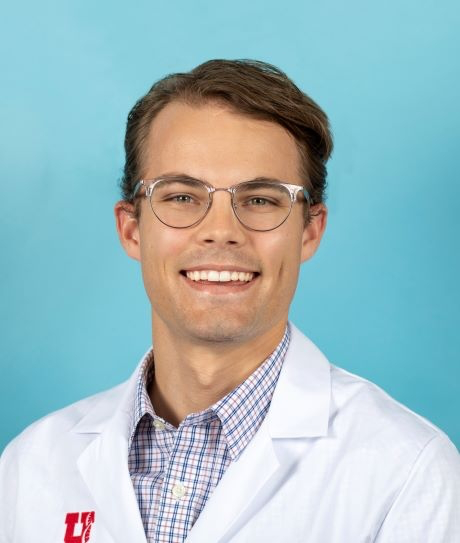Events on May 8, 2024

James Brundage Presents:
Genomic and Phenotypic Markers of Deep Learning Based, Cardiac Specific Age Acceleration
May 8, 2024 at 2:00pm for 1hr
Evans Conference Room, WEB 3780
Warnock Engineering Building, 3rd floor.
https://utah.zoom.us/j/94815698204Abstract:
Background: Heart structure and function change characteristically with age. Reasoning that different organs may age at different rates within the same person, recent efforts have inferred cardiac age acceleration from traditional cardiac measurements, radiomics, and deep learning (DL) models. We hypothesized that a video-based DL model whose cardiovascular magnetic resonance imaging (MRI) input excludes noncardiac structures would be a powerful tool to examine cardiac age acceleration.
Methods: All noncardiac pixels from cardiac MRI were excluded to enable heart-specific analyses in 66,521 UK Biobank participants. Using 10-fold cross-validation, a video-based DL model was trained to predict age from one cardiac cycle in the 4-chamber view. We examined associations of cardiac age acceleration, calculated as predicted heart age adjusted for calendar age, with outcomes and genetics.
Results: Predicted heart age explained 71.1% of variance in calendar age, with mean absolute error of 3.3 years. Traditional cardiac measurements explained only 10% of the variance in cardiac age acceleration. Apparent cardiac aging was slowed with greater exercise and accelerated with tobacco consumption. Cardiac age acceleration was associated with earlier mortality, elevated risk for aortopathy and cardiomyopathy, and greater circulating levels of 239 proteins measured at enrollment, including GDF15 and NT-proBNP. Two proteins were associated with age deceleration. The heritability of cardiac age acceleration was 25.9%; a genome-wide association study in 64,076 participants identified 23 loci (near, TTN, TNS1, LSM3, MECOM, PALLD, NPR3, KLHL3, DSP, CDKN1A, HDGFL1, ELN, SLC25A37, PI15, PLEC, AP3M1, ANKRD1, ADPRHL1, HMGA2, PGAP3, UHRF1, DOK5, MYO18B and WNT9B) of which 20 were not previously linked to accelerated cardiac aging. Mendelian randomization identified 11 proteins with evidence supporting a causal relationship with cardiac age acceleration. A polygenic score for cardiac age acceleration predicted earlier onset of arrhythmia, heart failure, myocardial infarction, and mortality.
Conclusion: These findings suggest that cardiac age acceleration contains information about cardiovascular fitness and disease risk that is not captured by traditional cardiovascular measurements. The GWAS loci and proteomic markers highlighted molecular pathways for mechanistic evaluation, and underscored that rather than a global aging program, factors local to the heart and vasculature were most strongly linked to cardiac age acceleration.
Bio: James Brundage completed his B.S. and M.S. in Neuroscience from BYU prior to beginning medical school at the University of Utah School of Medicine. While in medical school, he worked with Drs. Rob MacLeod and Benjamin Steinberg exploring deep learning models for electrocardiograms (ECG) and body surface potential maps. After his third year of medical school, he received a Sarnoff Cardiovascular Research Fellowship, and was precepted by Drs. James Pirruccello and Geoff Tison at the University of California San Francisco (UCSF). His work was focused on deep learning models for cardiac MRI and ECGs, along with exploration of the biological mechanisms that may underlie model predictions including imaging features and genetic architecture. He will complete is MD in 2025 and will apply to medical residency in internal medicine. He hopes to pursue a career as a physician-scientist at the intersection of deep-learning, cardiovascular medicine and computational genetics.
Posted by: Nathan Galli




